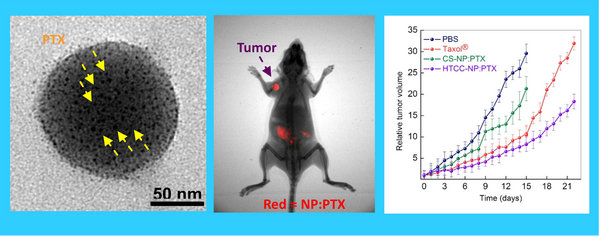Paclitaxel (PTX), a typical insoluble anticancer drug, has potent antineoplastic activity against various types of solid tumors such as non-small-cell lung cancer, ovarian cancer, and breast cancer. To allow intravenous administration, PTX has to be formulated in a 1:1 blend of Cremophor EL/absolute ethanol as Taxol?.
However, Taxol? can cause injury to normal tissues due to the nonspecific biodistribution of the drug in both tumors and normal tissues. Worse still, administration of Cremophor EL in practical dosage form can also arouse severe side effects including hypersensitivity reaction and neurotoxicity.
Prof. MA Guanghui and her group from Institute of Process Engineering, Chinese Academy of Sciences applied porous quaternized chitosan nanoparticles (NPs) for oral delivery of PTX (Figure 1). These NPs were small (~130 nm), uniform, and possessed porous structure. Especially, the PTX could be successfully encapsulated into NPs as in-situ nanocrystals, facilitating the achievement of high drug loading efficiency and the decrease of administration dosage.
To achieve a high oral bioavailability, they added quaternized chitosan in the matrix and fabricated the positively charged NPs, which greatly improved the intestinal permeability via paracellular transport. These PTX-loaded NPs could passively target the tumor site under the enhanced permeability and retention effect after oral administration. Compared with Taxol?, this convenient PTX formulation showed an improved antitumor efficacy, minimized Cremophor EL-associated toxicities, and exhibited promising potential for clinical usage.
This work was financially supported by the 973 Program (2009CB930300) and the National Nature Science Foundation of China (20820102036, 50703043).
This research has been published in Biomacromolecules. 2011, 12 (12), 4230–4239.
http://pubs.acs.org/doi/abs/10.1021/bm2010774

Figure 1. PTX-loaded quaternized chitosan nanoparticles improved therapeutic efficacy of PTX after oral administration. (image by IPE)
 Search
Search




 京公网安备110402500047号
京公网安备110402500047号